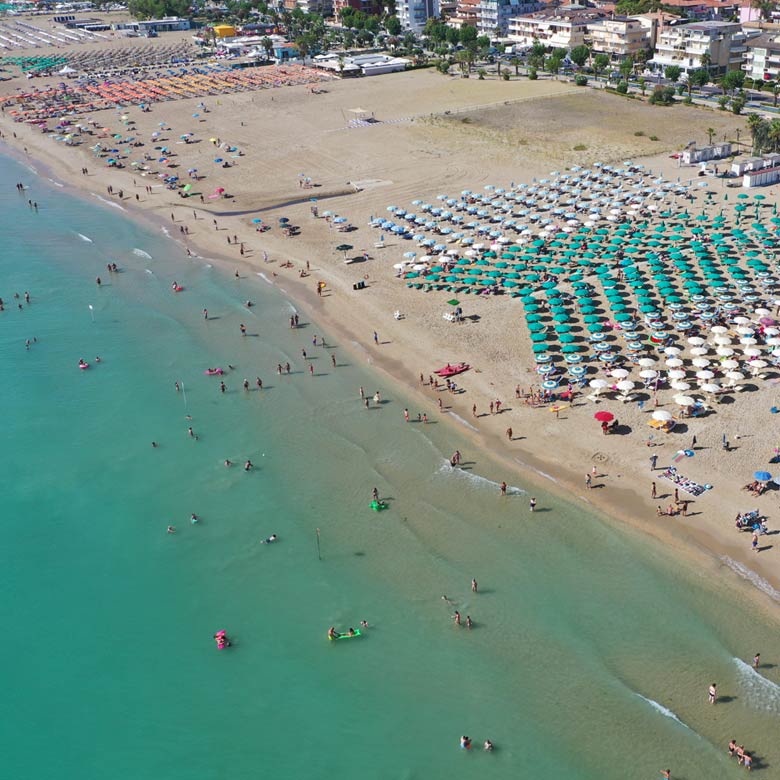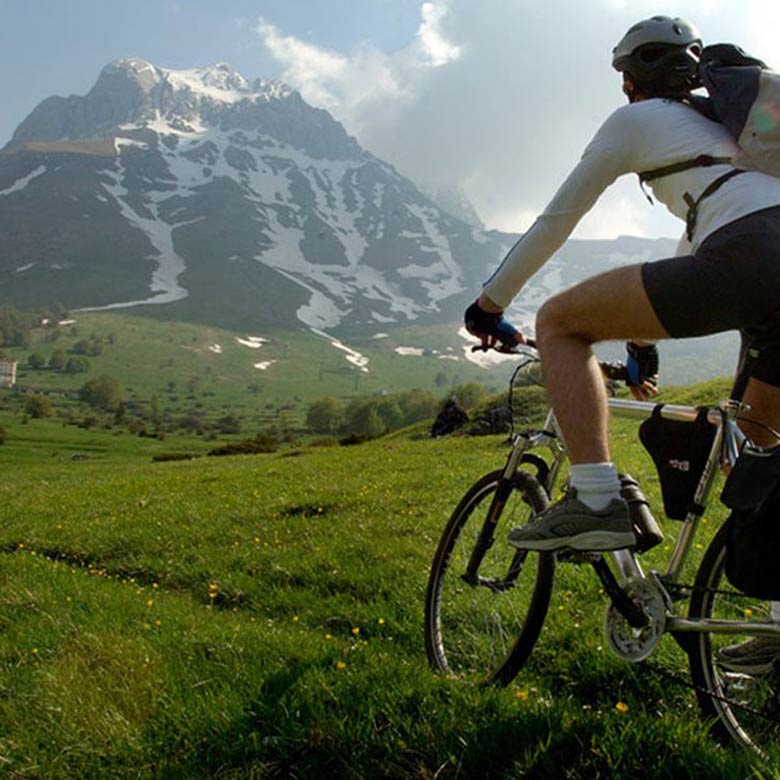Excursions, routes, itineraries, among uncontaminated nature
TERAMO
The city of Teramo has very ancient origins, it was the capital of the Praetotium, the name given to the surrounding territory under Roman rule . Under the rule of the Emperors Augustus and Hadrian there was a golden age of which the baths, the theatre, the amphitheater and other monuments submerged by the new city bore witness. During the 1400s it was torn apart by fights between the Melatini, Antonelli, Spennati and Mazzaclocchi families. It then passed under Francesco Sforza and Alfonso of Aragon. In 1798 it passed to the French until 1815 when it returned to the Spanish and then followed the history and fate of the south.
CAMPLI
Campli is located on a hill between the valleys of the Fiumicino and Siccagno streams. Rich in architectural monuments that make it a true city of art, Campli is home to a section of the National Archaeological Museum which houses the remains of the Necropolis of Campovalano. A beautiful example of medieval architecture is the Palazzo Parlamentare, which later became Farnese, located in front of the Cathedral of S. Maria in Platea from 1300, which has a Romanesque bell tower. Also famous is the Scala Santa, so named because, after 1776, the custom of granting indulgence to those who walked up it on their knees became widespread.
CAMPOVALANO
Campovalano, known for its monumental church and adjoining 10th century convent dedicated to St. Peter, is rich in testimonies of stones, wooden statues and frescoes from various periods. In 1967, in the adjacent plain, the first archaeological excavations were carried out of one of the major Picene necropolises dating from the 14th to the 3rd century BC. To date, around 600 tombs of the over 2,500 presumed have been excavated, with the recovery of various material exhibited in the archaeological museums of Campli and Chieti, awaiting a new location in the Campovalano Archaeological Park currently being defined. The construction of a multimedia mound of a building used for reception, services and exhibition is planned.
CIVITELLA DEL TRONTO
The fortress of Civitella del Tronto is one of the most impressive works of military engineering in Italy: in fact, it extends for more than five hundred meters in length on a rocky ridge. Its entire luminous history is linked to the strategic position it had, for a few centuries, as a stronghold garrisoning the northern borders of the various Neapolitan Kingdoms. The fortress and the connected village suffered multiple sieges but what has gone down in history the most is the unfortunate defense against the Sardinian Piedmontese army in 1860/61, which ended with the surrender on 20 March 1861, the very last Bourbon stronghold to bow to the nascent unity of Italy.
CASTELLI
Located just below the peaks of Mount Camicia, Castelli represents one of the most important tourist destinations in Abruzzo. It is home to famous ceramic masters who served the kings of Naples and the princely houses of Rome. Known above all for its artisan workshops, Castelli has been renamed the “city of ceramics” and owes its fame to this art, whose origins date back to around the 13th century. Since then, in the small but characteristic village at the foot of the Gran Sasso, this very fine art has been handed down from father to son.
ATRI
Atri was a city of great prestige in the ancient world, since the 11th and 12th centuries BC. It was the only city on the Adriatic coast to mint money before Rome, as well as an important center of trade, thanks to its port on the Adriatic, hence the thesis that the name of the sea itself derives from ancient Hatria. In Roman times he fought alongside Rome in the wars against Hannibal. The city experienced its period of maximum splendor with the Dukes of Acquaviva. The glorious past of Atri is testified by the archaeological finds scattered throughout the surrounding area.
NATIONAL PARK
GRAN SASSO
Abruzzo guards one of the largest and most precious protected areas in Europe, the Gran Sasso and Monti della Laga National Park. Here the millenary work of man has integrated harmoniously into a superb environmental context, enriching it further. A nature rich in forests, springs, waterfalls, prairies, plateaus, dizzying ridges and rocky walls where numerous fauna and flora species exclusive to this area live, in addition to the most representative animals of the Apennines such as the wolf, the chamois Abruzzo, the bear, the golden eagle or the white hat. The Park territory effectively constitutes a “European monument to biodiversity”.
Idéfix, CC BY-SA 3.0 , via Wikimedia Commons
SALINELLO GORGES
A short distance from Civitella del Tronto, it is possible to go on excursions in the Salinello Gorges. A natural environment that combines history, culture and nature between the two sides of the Gemelli Mountains: Montagna di Campli and Montagna dei Fiori. The creator of this natural monument was the Salinello Torrent which, acting on the entire mountain, created over millions of years a “gorge” a few kilometers long, about 200 meters high and with a width varying from no more than five meters to tens of meters, resulting in waterfalls, caves and cavities
SAN GABRIELE
DELL’ADDOLORATA
The religiosity of Abruzzo, over the millennia, has concretized the expressions of devotion in some great sanctuaries. The first, where over two million faithful come every year, is located at the foot of the Gran Sasso and is dedicated to a young Passionist Saint. His name is San Gabriele dell’Addolorata. The fame of Saint Gabriel exploded in 1892 when his mortal remains were exhumed and the first sensational miracles occurred on his tomb. In 1920 he was proclaimed a saint and in 1959 Pope John XXIII declared him patron saint of Abruzzo.
SANCTUARY OF GIULIANOVA
It was the year 1557, on April 22nd when a farmer, a certain Bertolino, intent on collecting wood, saw a great light with the smiling Virgin who instructed him to announce to the community the best news: the Mother of God had chosen the town of Giulia to be honored with the construction of a sanctuary. As imperishable proof of the miracle, at the base of an olive tree, a source of pure water gushed out, which still exists today. Anyone passing through the town can visit the source of the miracle and bathe by marking their forehead, so they will be blessed by the Madonna.
ALBA ADRIATICA
PEARL OF THE ADRIATIC
Discover our city, among beaches, large pine forests, seafront and many attractions.
For those who love a cheerful and lively stay, Alba Adriatica offers numerous places for leisure and entertainment.
The wide beach of fine, silvery-white sand; the extraordinarily clear sea, with a gentle slope, ideal for children and families


TOURISM IN ABRUZZO
between art, history
nature and traditions
Abruzzo offers countless emotions: its landscapes, among green hills, majestic mountains, uncontaminated places, ancient villages, parks and wonderful beaches.
Kilometers and kilometers of beach, rocks and fine sand for holidays that know how to amaze, relax and recharge.
Abruzzo is called the ‘Green Region of Europe’, and it is no coincidence that over a third of its surface is protected.
